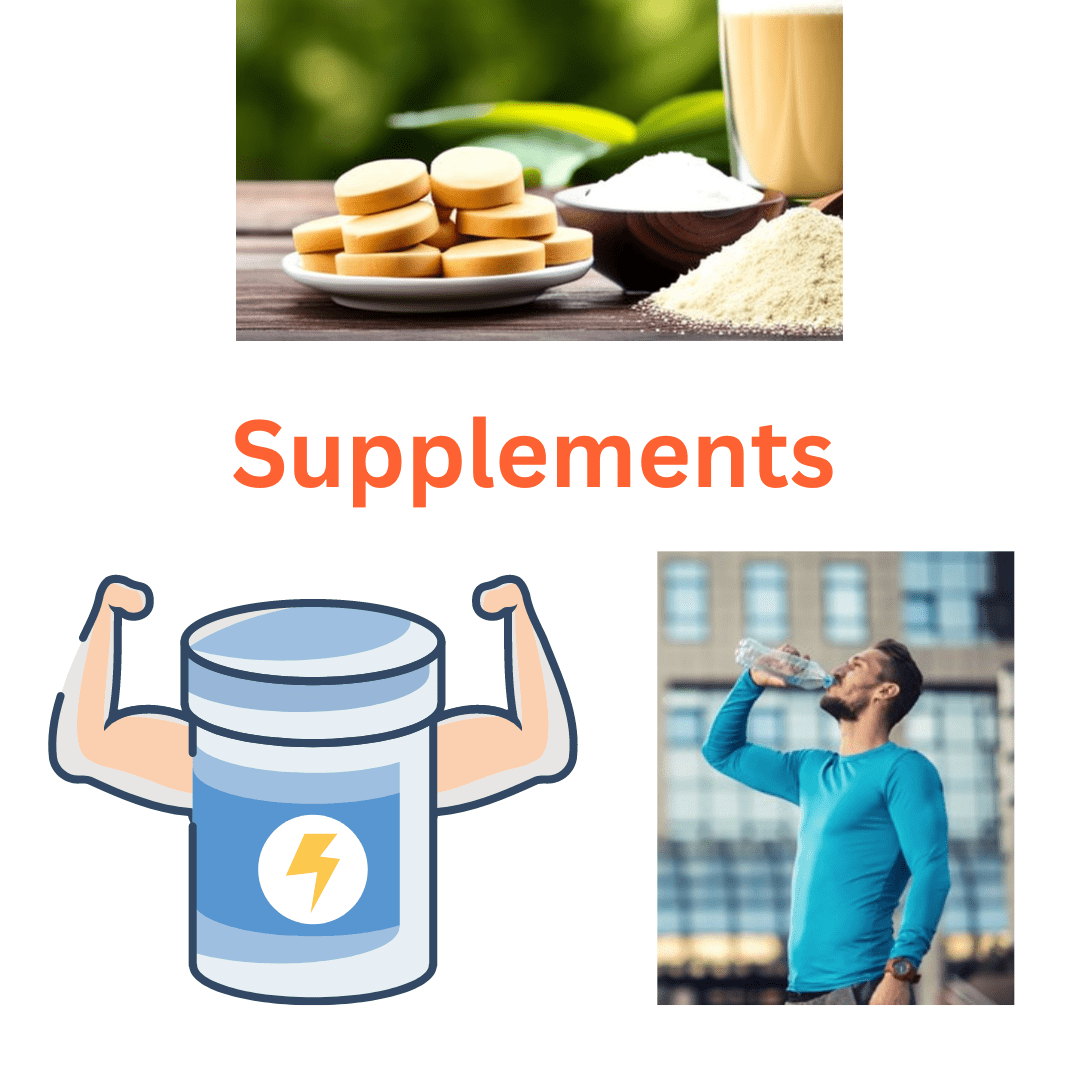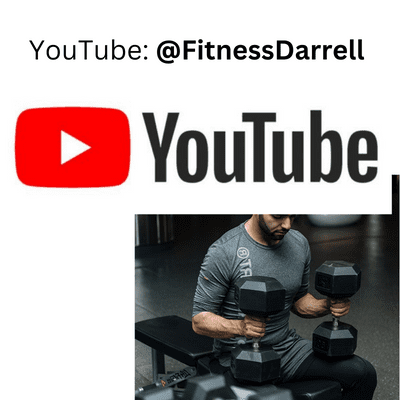
Wanting to Lose Fat through Cardio?
Are you starting to suspect that your treadmill has a secret pact with your scale to keep those numbers stuck? Fear not! Discover the most effective, proven cardio for fat loss and learn how to plan, work out, and recover to maximize your results.
Cardiovascular exercise, or cardio for short, is a type of physical activity that increases heart rate and respiration to improve overall fitness and health. While cardio benefits heart health, it is also an excellent way to lose fat. By elevating the heart rate during exercise, the body burns calories and can tap into fat stores as a source of energy.
Cardio can take many forms, including running, cycling, swimming, rowing, or dancing. Regardless of the type of cardio chosen, it can be an effective tool for achieving weight loss goals when paired with proper planning and execution.
This article will discuss various aspects of incorporating cardio into your weight loss routine, including:
•Planning your workouts effectively to maximize fat-burn potential while minimizing the risk of injury
•Sample workouts that can be done at home with no equipment required
•Research on how cardio aids in weight loss efforts
•Recovery strategies that are essential for optimal performance.
The Role of Planning in Achieving Fat Loss Goals
Before starting any workout program, several factors must be considered to achieve successful results from cardiovascular exercise for weight loss. One important aspect is setting realistic goals based on individual needs and preferences. This means determining how much weight you want to lose and setting a reasonable timeline for achieving your goals.
Another crucial factor in planning a successful program is determining which type of cardio best suits your needs based on personal preference or physical limitations such as joint or muscle issues. Once you have established which style suits you best, you can create a workout schedule tailored towards steady-state training (SST), which includes long periods of sustained activity at lower intensities, or high-intensity interval training (HIIT), which involves shorter bursts followed by brief periods of rest.
Workouts: Weights or Cardio First?
The age-old debate of whether to lift weights before or after cardio remains a hot topic. The truth is that both forms of exercise have their benefits, and the order in which you choose to do them may depend on your preference. However, research shows that starting with weight training before cardiovascular exercise can lead to better results regarding fat loss.
Lifting weights depletes the body’s glycogen stores, causing it to turn more toward its fat stores for energy during subsequent cardio exercises. For those looking for sample workouts, there are many options available.
For those who enjoy gym workouts, there are plenty of ways to incorporate weight training and cardio into your routine. Alternatively, if you prefer working out from home, many bodyweight exercises can be done without equipment, such as jumping jacks, high knees, and burpees.
Here’s a simple way to determine which way to go first:
| Criteria | Weight Training First | Cardio First |
| Heart Rate Response | Lower heart rate response during weight training | Higher heart rate response during cardio |
| Perceived Effort | Moderate intensity may shift to vigorous | Perceived effort may be lower |
| Carbohydrate Depletion | Slightly more fat is used for fuel | Potential depletion of carbohydrates |
| Impact on Strength | Less negative impact from cardio | Running may negatively affect strength |
| Endurance Training Volume | No significant limitations | Limited to 20-30 minutes |
| Efficacy of Strength | Unaffected by moderate-high intensity cardio | Decreased efficacy with endurance training |
The Science Behind Cardio for Fat Loss
It’s no secret that cardio burns calories and therefore helps with weight loss efforts. However, do you know the science behind why this happens? When we engage in cardiovascular exercise, our bodies require more energy than they would at rest. They begin burning calories from glucose (from food) stored in muscle tissue, followed by increased consumption of fatty acids stored as adipose tissue to fuel physical activity.
Different types of cardio can affect fat loss in different ways. For example, steady-state training (SST) requires more extended periods of sustained activity at lower intensities which burns a higher percentage of fat calories. In contrast, high-intensity interval training (HIIT) involves alternating short bursts of high-intensity work with brief rest periods, resulting in an increased metabolic rate throughout the day, potentially leading to more overall calorie burn even after you’ve stopped exercising. Research finds both HIIT and steady-state training contribute to calorie burn after the workout through excess post-exercise oxygen consumption (EPOC). Still, the magnitude of the effect may vary based on individual factors and the duration and intensity of the exercise.
The effectiveness of different exercise modalities depends on individual preferences, goals, and overall exercise adherence. Any cardio exercise, including steady-state training, can contribute to weight loss when performed consistently and with a balanced diet.
A recent study published in March 2023 revealed that high-intensity interval training (HIIT) shows promising results for fat loss and cardiorespiratory fitness (CRF) in young and middle-aged individuals, with outcomes comparable to or even surpassing those of moderate-intensity continuous training (MICT). While the clinical significance of these improvements may be limited, HIIT stands out as a time-saving and enjoyable alternative to traditional MICT. The effectiveness of HIIT, however, may vary depending on factors such as age, obesity, duration of training, frequency, and the specific interval used in the workouts.
Recovery Strategies: How To Maximize Your Results
Last but not least, recovery should be an integral part of any successful weight loss routine.
Rest time: One of the most important things to focus on is adequate rest time between workouts to allow your body to repair and rebuild muscle tissue.
Stretching: stretching exercises can also help prevent injury and improve flexibility. Active recoveries, such as walking or light cycling on non-workout days, can also help encourage circulation and promote muscle recovery.
When done correctly, cardio can be one of the most effective ways to achieve weight loss goals. By focusing on planning, incorporating weights before cardio (where possible), understanding the science behind how it works, and prioritizing recovery strategies, you can maximize your results and achieve a healthier lifestyle.
Planning: For Achieving Fat Loss Goals Through Cardio
Setting Realistic Goals
Before beginning any fitness routine, it is essential to set achievable goals. When speaking of cardio for fat loss, it is imperative to understand that losing weight should not be the only goal. Building endurance and improving heart health and stamina should also be considered.
When setting weight loss goals, it is crucial to consider your body type and current fitness state. For example, a beginner may have a different starting point than someone exercising consistently for years.
Determining the Best Type of Cardio
The best type of cardio for you depends on your needs and preferences. Running, cycling, swimming, or any other form of cardio can all be used to achieve fat loss goals. Choosing an activity, you enjoy is essential, so you will likely stick with it in the long run.
Mixing things up and trying new activities is beneficial, as this will help keep things fresh and exciting. If you don’t like running on a treadmill or hitting the elliptical machine at the gym, try something new, like hiking or taking dance classes. It’s also essential to avoid getting stuck in a rut doing just one type of exercise, as this can lead to boredom and eventually quitting altogether.
Creating a Schedule or Plan
Developing your plan should include both steady-state workouts (longer duration moderate intensity) and high-intensity interval training (HIIT).
This combination will help improve overall endurance levels and provide an excellent balance between burning calories during each workout and boosting metabolism post-workout. A weekly schedule can be developed based on individual availability, but consistency must be maintained and maintainable through scheduling realistic time slots that fit lifestyle requirements.
Designing your cardio workout plan should be challenging but achievable. Building your endurance levels gradually is better than overdoing it initially and risking injury or burnout.
Sample Cardio for Fat Loss Plan
For beginners, start slow and work your way up. 2-3 times per week without HIIT is a great way to reduce the chances of being injured, increase enjoyment, and increase making cardio a habit.
For someone experienced, here’s an example of a seven-day cardio plan that builds endurance improves overall fitness levels, and supports fat loss goals:
Monday: HIIT Workout – 30 seconds of high-intensity exercise followed by 30 seconds rest. Repeat the cycle for 20-25 minutes.
Tuesday: Steady-State exercise such as swimming and/or cycling
Wednesday: Steady-State (moderate-intensity) jog/run on a treadmill or outdoor environment.
Aim for 45-60 minutes.
Thursday: Weight Training Session followed by steady-state cardio, including cycling or rowing machine.
Aim to target all major muscle groups with three sets of 10-12 reps each. Friday: Rest
Saturday: HIIT workout for an increased metabolic rate on weekends – repeated as in Monday’s session.
Sunday: Rest
Adapt your exercise to your goals
Developing your cardio routine requires thoughtful planning to create a realistic schedule that integrates steady-state and high-intensity interval training sessions while targeting your preferred type of exercise. Maintaining consistency while slowly building up endurance levels over time is essential. Remember to enjoy the process, stay motivated, and track progress effectively towards the set goal(s) while making adjustments along the way as necessary.
Workouts
Incorporating Weights Before Cardio
Some people believe cardio is the best form of exercise for fat loss. While cardiovascular exercise is essential, it is not the only exercise that can help with weight loss goals. Weightlifting before cardio can be more beneficial for individuals looking to burn fat.
Weightlifting helps build muscle, increasing your metabolism and burning more calories even when you’re at rest. Incorporating weights before cardio can help you burn more calories during your workout and throughout the day.
Sample Weightlifting Routine
When incorporating weights before cardio, it’s important to have a plan in place to ensure you are targeting all of your major muscle groups. Here is a sample weightlifting routine before a cardio workout:
– Warm up with dynamic stretching (leg swings, arm circles, etc.)
– Squats (3 sets of 10 reps) – Lunges (3 sets of 10 reps per leg)
– Deadlifts (3 sets of 10 reps) – Bench presses or push-ups (3 sets of 10 reps)
– Rows or pull-ups (3 sets of 10 reps) This routine targets all major muscle groups and prepares your body for an effective cardio workout.
At-home Cardio Workout Options
Going to the gym for a traditional cardio workout is only sometimes possible. Here are some at-home options that don’t require any equipment:
– Jumping jacks: Start standing with feet together and arms by your sides. Jump up while spreading arms and legs out wide, then land back in starting position.
– High knees: Stand tall and bring one knee up towards your chest while hopping on the other foot. Switch legs quickly.
– Burpees: Start standing, jump into a plank position, do a push-up, then jump back up and repeat. These exercises can be incorporated into a HIIT workout for maximum fat-burning potential.
HIIT Workout Examples
High-intensity interval training (HIIT) is a form of cardio alternating between high-intensity exercise and low-intensity recovery periods. HIIT workouts are effective for fat loss because they increase your heart rate and metabolism, allowing you to burn more calories in a shorter time.
Here are some examples of HIIT workouts: – Run for 30 seconds at maximum effort, then walk or jog for 1 minute.
Repeat for 10-15 minutes. – Cycle as fast as possible for 20 seconds, then rest or pedal slowly for 10 seconds.
Repeat the cycle for 4 minutes. – Jump rope as fast as possible for 30 seconds, then rest or jump slowly in place for 10 seconds.
Repeat the cycle for 10 minutes. Incorporating these workouts into your regular exercise routine will help you achieve your weight loss goals faster and more effectively.
The Science Behind How Cardio Aids in Fat Loss
Cardiovascular exercises, or cardio, are an effective way to lose weight and burn fat. Cardio workouts increase the heart rate, which helps burn calories and reduce body fat.
The heart is a muscle that needs working out regularly to maintain its efficiency. When the heart pumps blood faster during cardio, it strengthens the heart muscles and improves blood circulation.
During cardio exercises, your body burns calories from stored energy sources like glycogen and fats. When your body runs low on glycogen reserves, it burns fat for energy.
Consistent cardio workouts help your body burn fat more efficiently as an energy source—losing fat through cardio results in weight loss.
Studies on the Effectiveness of Steady-State vs. HIIT Workouts for Fat Loss
High-Intensity Interval Training (HIIT) has grown popular recently due to its effectiveness in burning fat quickly. HIIT is a type of cardiovascular exercise involving short bouts of high-intensity exercise with periods of rest or low-intensity training.
While steady-state cardio exercises like running on a treadmill at a constant pace can be practical for weight loss, research has shown that HIIT may burn more calories post-workout than steady-state training. One study compared the effectiveness of HIIT versus steady-state exercise in burning belly fat among children, young men and women, older individuals, and a number of patient groups.
It showed that while both methods effectively reduced overall belly fat percentage, those who engaged in HIIT lost more subcutaneous belly fat than those who did steady-state exercises.
Ultimately, each individual should choose which type of workout suits their body and preferences best. HIIT may be more effective for those with limited time to exercise, while steady-state cardio may be better suited for those who prefer longer workouts.
The Role of Diet in Maximizing the Benefits of Cardio
While cardio can help you burn calories and reduce fat, diet plays a significant role in maximizing the benefits of cardio for weight loss. Eating a balanced diet with a low caloric intake rich in fiber, protein, and micronutrients is essential to lose weight through cardiovascular exercises.
Your body needs nutrients to function correctly and to recover after an intense workout. Additionally, consuming carbohydrates before exercising can provide ample energy for a cardio session.
A balanced diet with healthy carbohydrates like whole grains, fruits, and vegetables will enable your body to perform at its best during workouts. Your post-workout meal should contain protein-rich foods such as eggs or chicken breast to help rebuild muscle tissues damaged during exercise.
Having a meal plan will aid in recovery from strenuous workouts and prevent muscle breakdown. Incorporating regular cardio into your fitness routine provides numerous health benefits, including reducing weight and burning fat.
However, choosing the type of workout that works best for your body type and goals is crucial. Additionally, maintaining a healthy diet filled with nutrient-dense foods will maximize the benefits obtained from cardiovascular exercises.
Recovery
Importance of Proper Rest and Recovery After Intense Workouts
While cardio workouts can have numerous benefits for fat loss, it is essential to remember that they also place a substantial amount of stress on the body. As a result, proper rest and recovery after intense workouts are crucial for injury prevention and overall health.
When you engage in any form of physical activity, your muscles become fatigued and require time to recover to avoid injury. One way to ensure proper rest and recovery is by taking at least one day off per week from cardio activity.
During this time, you can focus on other types of exercise, such as weightlifting or yoga, or take a day off altogether. Additionally, ensure you get enough sleep each night, as lack of sleep can increase the risk of injuries.
Stretching Exercises to Prevent Injury and Improve Flexibility
Stretching exercises are an excellent way to prevent injury during cardio workouts and improve flexibility. Flexibility allows for a more excellent range of motion during exercise, which can lead to improved performance and reduced risk of injury. One type of stretching that is particularly beneficial for cardio workouts is dynamic stretching.
Dynamic stretching involves moving through a range of motion with controlled movements rather than holding static stretches. Examples include walking lunges, high knees, or butt kicks.
Another effective stretching method is foam rolling which helps release tightness or knots in your muscles before or after your workout. Examples include rolling out the quads, hamstrings, and IT bands.
Tips on How to Incorporate Active Recovery into Daily Life
Active recovery refers to low-intensity activities that promote circulation and decrease muscle soreness after intense exercise sessions such as cardio workouts. Incorporating active recovery into your daily life can help speed up muscle recovery times post-workout while improving overall cardiovascular health.
Examples of active recovery activities include walking, swimming, and cycling at a low intensity. Yoga or Pilates can also be great options for active recovery as they focus on gentle movements that improve flexibility, balance, and relaxation.
Incorporate these activities into your daily routine by walking or biking instead of driving when possible or incorporating a yoga or Pilates session into your weekly workout schedule. This will help you recover faster after intense cardio workouts and promote overall health and wellness.
Cardio Benefits are Ginormous
The benefits of cardio workouts for fat loss are ginormous. However, it is equally important to prioritize proper rest and recovery to avoid injury and maximize results. Including stretching exercises such as dynamic or foam rolling can prevent injuries while improving flexibility.
Additionally, incorporating low-intensity activities like walking or yoga into your daily routine can help facilitate active recovery and promote overall health and wellness. Remember that taking care of your body through proper rest and recovery is as important as the workout itself!
After exploring the various aspects of cardio for fat loss, it’s clear that adding cardio into a workout routine can be incredibly beneficial for those looking to shed excess body fat. By planning out a realistic schedule and utilizing a variety of workouts, you can achieve their goals while also preventing burnout or injury.
Setting Realistic Goals
Setting realistic goals is one of the most important things to remember when utilizing cardio for fat loss. While it can be tempting to lose weight quickly, it’s essential to remember that sustainable progress takes time and effort.
Rather than focusing solely on the number on the scale, individuals should aim to improve their fitness and health. By tracking progress and celebrating small victories along the way, individuals will be more likely to stick with their plans long-term.
Incorporating Weights First
While there is no “right” way to structure a workout routine, incorporating weights before cardio benefits fat loss. Lifting weights helps build muscle mass which boosts metabolism leading up to your cardio session (steady-state or HIIT), further increasing calorie burn rates.
The Role of Diet
Exercising and paying attention to diet is essential when trying to lose weight. Incorporating healthy foods such as complex carbohydrates and lean protein sources into one’s diet is crucial for maximizing the benefits of cardio. Regardless of how much you work out, achieving your goal can be challenging if your diet improves.
The Science Behind Cardio For Fat Loss
Cardio exercise is scientifically proven to be an effective way to lose weight. The body uses stored energy (in this case, excess fats) for fuel during long periods of physical exertion. This results in burning an immense amount of calories and reducing fat stores.
Active Recovery
Rest and recovery after intense workouts are crucial for preventing injury and ensuring continued progress. Adding stretching exercises or active recovery techniques can help improve flexibility while increasing blood flow to worked muscles.
Cardio for fat loss is a highly effective way to achieve and maintain healthy body weight over time. By setting realistic goals, incorporating weights before cardio, watching their diet, understanding the science behind it all, and utilizing active recovery techniques, individuals can maximize the benefits of this type of workout routine, resulting in a healthier lifestyle overall.
Here are some other topics that will be addressed in the future:
Measuring Cardio Fitness Levels: VO2 Max and MET
There are several ways to measure cardiovascular fitness levels, but two of the most popular are VO2 max and MET. VO2 max is the maximum amount of oxygen your body can use during exercise, while MET (metabolic equivalent) is a measure of the intensity of an activity. Knowing your VO2 max and MET levels can help you better understand your fitness level and tailor your workouts accordingly.
More Cardio Fitness Tests: YMCA Bike, Talk Test, etc.
In addition to VO2 max and MET, there are several other tests you can take to measure your cardiovascular fitness. These include the YMCA bike test, talk test, and others. These tests can help you determine your target heart rate, how hard you should be exercising, and how long you should be exercising.
Endurance Training and Health of the Heart Benefits
Endurance training is a form of cardio exercise that focuses on improving your cardiovascular endurance. Regular endurance training can improve the health of your heart, lower your blood pressure, and reduce your risk of chronic diseases. We will explore the benefits of endurance training and provide you with tips on how to incorporate it into your exercise routine.
FITTE Model – Applying frequency, intensity, time, type, and enjoyment to cardio workouts
The FITTE model is a framework for designing effective cardio workouts. It stands for frequency, intensity, time, type, and enjoyment. By applying the FITTE model to your cardio workouts, you can create a workout that is tailored to your fitness level, goals, and preferences.
FITT-VP Model – Applying frequency, intensity, time, type, volume, pattern, and progression recommendations to aerobic activities
The FITT-VP model is another framework for designing effective cardio workouts. It stands for frequency, intensity, time, type, volume, pattern, and progression. By applying the FITT-VP model to your aerobic activities, you can ensure that you are challenging yourself enough to see progress while also avoiding injury.
How to Calculate and Apply Heart Rate Reserve (HRR) and Maximum Heart Rate (MHR)
Your heart rate is a good indicator of how hard you are working during cardio exercise. Knowing your maximum heart rate (MHR) and heart rate reserve (HRR) can help you determine your target heart rate zone and make sure you are working out at the right intensity. We will explore how to calculate and apply your MHR and HRR to your cardio workouts.
How to Use Ventilatory Thresholds to Grow Cardio Fitness
Ventilatory thresholds are another way to measure the intensity of your cardio workouts. By knowing your ventilatory thresholds, you can determine the most effective workout intensity for improving your cardiovascular fitness. We will explore how to use ventilatory thresholds to grow your cardio fitness and get the most out of your workouts.
Cardio Periodization
Cardio periodization is a training method that involves varying the intensity and volume of your cardio workouts over time. By using cardio periodization, you can prevent boredom, avoid injury, and continue to see progress in your fitness level. We will explore how to use cardio periodization to keep your workouts fresh and challenging.
ACE Integrated Fitness Training (IFT) Model applied to cardio
The ACE Integrated Fitness Training (IFT) Model is a comprehensive training framework that can be applied to all types of exercise, including cardio. By using the ACE IFT Model, you can design a well-rounded cardio program that takes into account your fitness level, goals, and preferences. We will explore how to apply the ACE IFT Model to your cardio workouts.
References:
Guo Z, Li M, Cai J, Gong W, Liu Y, Liu Z. Effect of High-Intensity Interval Training vs. Moderate-Intensity Continuous Training on Fat Loss and Cardiorespiratory Fitness in the Young and Middle-Aged a Systematic Review and Meta-Analysis. Int J Environ Res Public Health. 2023 Mar 8;20(6):4741. doi: 10.3390/ijerph20064741. PMID: 36981649; PMCID: PMC10048683.
GOTO, KAZUSHIGE1; ISHII, NAOKATA1; SUGIHARA, SHUHEI2; YOSHIOKA, TOSHITSUGU2; TAKAMATSU, KAORU2. Effects of Resistance Exercise on Lipolysis during Subsequent Submaximal Exercise. Medicine & Science in Sports & Exercise 39(2):p 308-315, February 2007. | DOI: 10.1249/01.mss.0000246992.33482.cb
Willis LH, Slentz CA, Bateman LA, Shields AT, Piner LW, Bales CW, Houmard JA, Kraus WE. Effects of aerobic and/or resistance training on body mass and fat mass in overweight or obese adults. J Appl Physiol (1985). 2012 Dec 15;113(12):1831-7. doi: 10.1152/japplphysiol.01370.2011. Epub 2012 Sep 27. PMID: 23019316; PMCID: PMC3544497.









